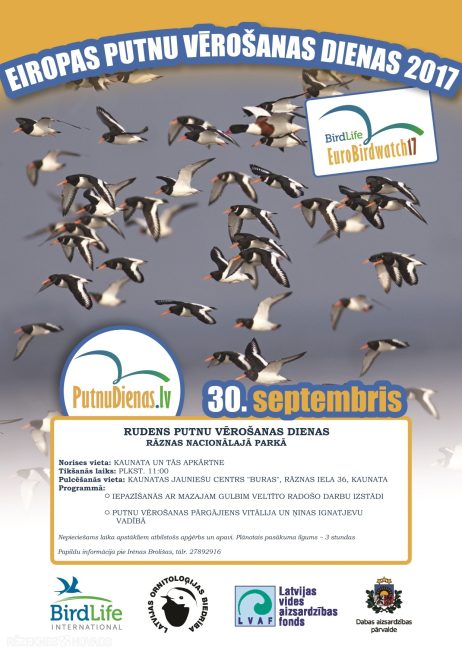In Razna National Park, autumn bird-watching days call for swabs

At Razna National Park, Kaunatā Saturday, September 30, a European bird-watching day event will be held, during which visitors will be able to explore the birds surrounding the surroundings and learn more about the swimming swans in Latvia - the small, northern and hill beds.
The gathering of the leads is scheduled for 11.00. Kaunatas at the youth centre “sails” where you can see the exhibition of creative works dedicated to the small swan. In 2016, the Latvian Schools participate in the international promotion “Swan flight”. As part of this, Paraplaniste Sasha Dench carried out a route suitable for the migration path of a small swan from the Pechora river delta in the Autonomous Region of New_Zealand in Russia to Slim bridge in Great Britain.
After viewing the exhibition, an experienced bird observer – Vitalia and Nina Ignatiev – will be able to travel to Kaunatas lakes, which is the polishing and feeding site of migratory waterbirds before the long road to wintering. The lake has also been taught by swans. In autumn, when the yellowed lake canes are smuggling sharply with blue water and sky, the landscape is accompanied by royal birds with their bright white whites.
In previous years Kaunatas lake was more watched by hill beans, which can be recognized by the pronounced hill above the orange-colored beak. Smaller guests on this side are the northern swans, characterised by a yellow beak without a hill.
The Nature Protection Bureau invites the people of Razna National Park and guests to participate in the event to establish a tradition of bird observation in Latvia's latest national park.
At this time, free European bird-watching day events will be held elsewhere in Latvia. More details can be found on the event website www.putnudienas.lv.
The aim of European bird observation days is to focus on the miracle of bird migration and the needs of migratory birds during travel and wintering in the Mediterranean and Africa. The migratory bird species are very important not only in the northern areas of the nesting area, but also by suitable recreational and feeding areas on the route of migration, as well as suitable habitats in winter areas.
Information prepared by: Irene Broliis
Natural Education Specialist
Nature Conservation Agency
Natural Education Centre “Razna”
Mob. phone 27892916
Email: irena.brolisa@daba.gov.lv